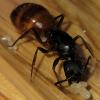1. Location - Collected from SoCal
2. Date - Collected by a friend in 2021
3. Habitat - Shrubland
4. Length - ~7mm
5. Color, hue, pattern, texture - golden brown
6. Distinguishing characteristics - small body size and large eyes
Preface/acknowledgement of key validity and flaws:
I do acknowledge that the publicly available Myrmecocystus keys, namely the Endiodioctes key, do have flaws and don't include all known species or variants. With that being said, there is only one publicly known variant/species in the Myrmecocystus subgenus in California and it is not similar to M. ewarti. Even though the Myrmecocystus subgenus key does not include all the undescribed species, it doesn't concern this as they are not from California.
Gyne frontal head and profile before keying process.
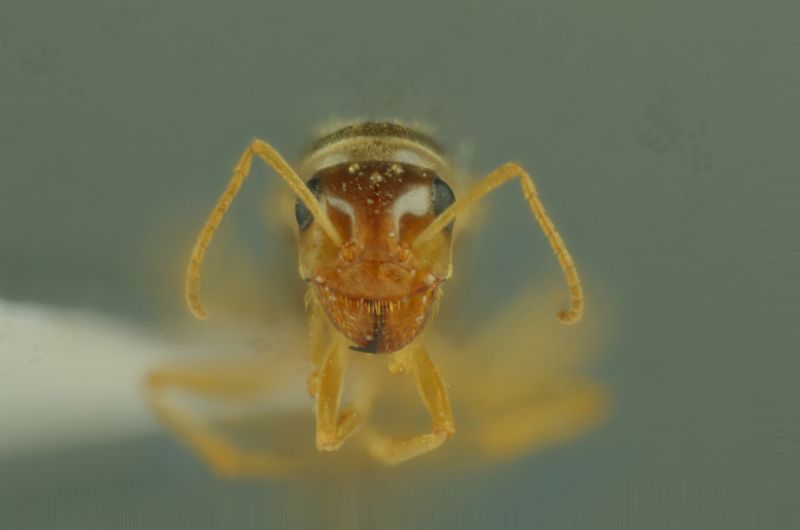
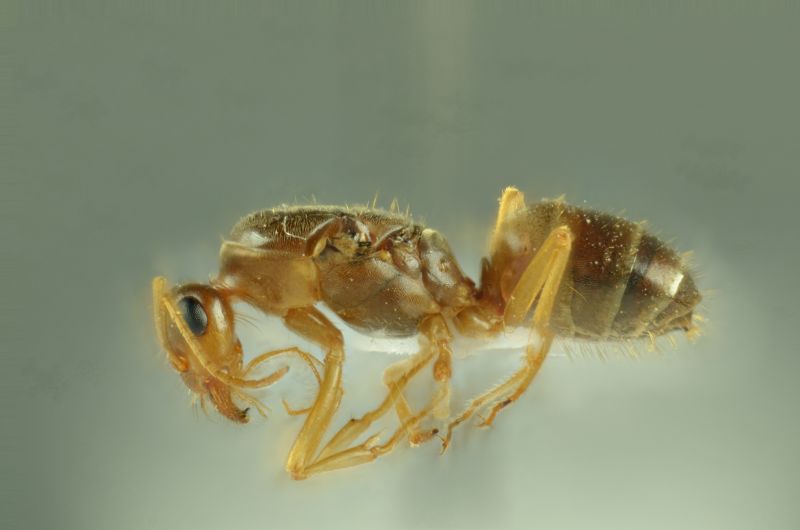
Now on to keying~~~
1
- Fifth segment of maxillary palp broadest in middle, narrowed basally and apically; hind femur without erect hairs on dorsal surface; hind tibia with hairs decumbent, never fully erect . . . . . 2
- Fifth segment of maxillary palp broadest well basad of middle, gradually narrowed toward apex or parallel sided; hind femur with erect hairs on dorsal surface; hind tibia with abundant fully erect and suberect hairs . . . . . 5
Unfortunately I am not able to get a more zoomed in photo, but when viewing figure 1a the fifth segment of the maxillary palp is broadest in the middle which narrows both basally and apically. In reference to figure 1b, the hind femora shows no erect hairs on the dorsal surface. Using the same figure, the hind tibia lacks any fully erect hairs. This negates the option of couplet 5 and moves this to couplet 2.
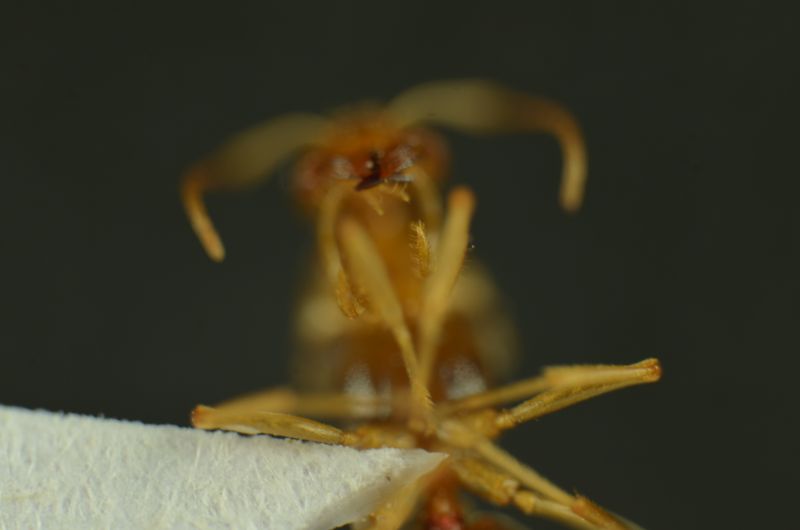
(figure 1a)
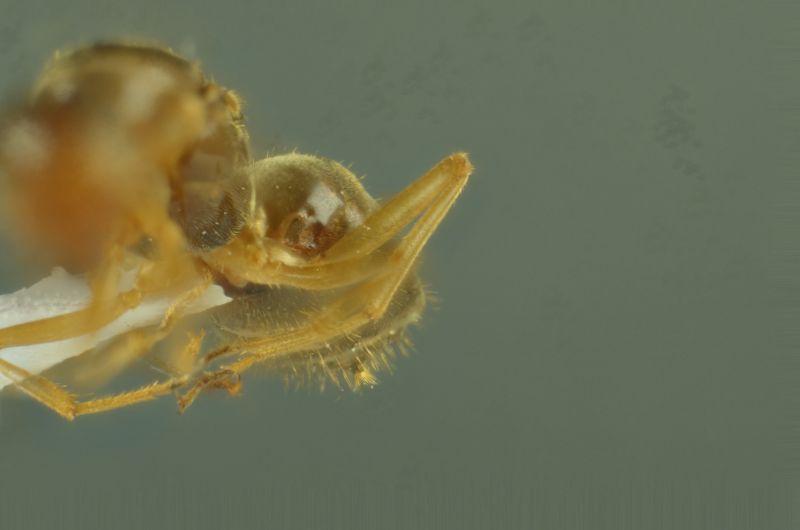
(figure 1b)
2
- Antennal scape with decumbent or appressed hairs only except a few erect hairs at tip; ocelli normal, OD less than 0.12 mm . . . . . 3
- Antennal scape with conspicuous coarse erect and suberect hairs; ocelli large, OD greater than 0.15 mm . . . . . Myrmecocystus navajo
Using figure 2 as a reference, there is a clear lack of coarse erect and suberect hair with only a few present at the apex of the scapes - negating M. navajo and moving this to couplet 3.

(figure 2)
3
- Fourth segment of maxillary palp gradually widened from base to apex; fine punctures of parapsis abundant and uniformly spaced (Figs. 17, 18); side of frontal lobe shiny between close, fine punctures . . . . . 4
- Fourth segment of maxillary palp distinctly clavate (Fig. 9); fine punctures of parapsis very irregularly spaced (Fig. 16); side of frontal lobe dull and roughened between fine punctures which are at least partially obscured . . . . . Myrmecocystus christineae
Using figure 3a, the fourth segment of the maxillary palp gradually widens from base to apex and is not clavate. When viewing figure 3b, there are fine abundant and uniformly spaced punctures on the parapsis. It's difficult to see in figure 2 because of zoom levels and compression, but the side of the frontal lobe is shiny between close, fine punctures. This combination negates M. christineae and moves this to couplet 4.
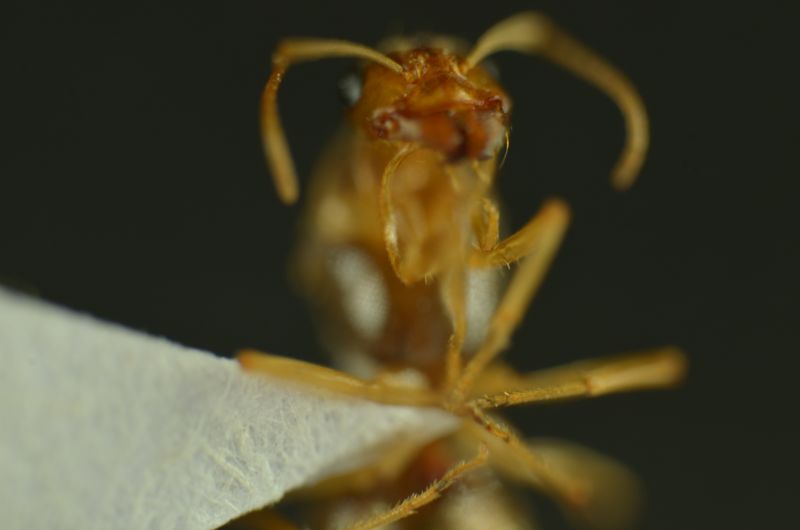
(figure 3a)
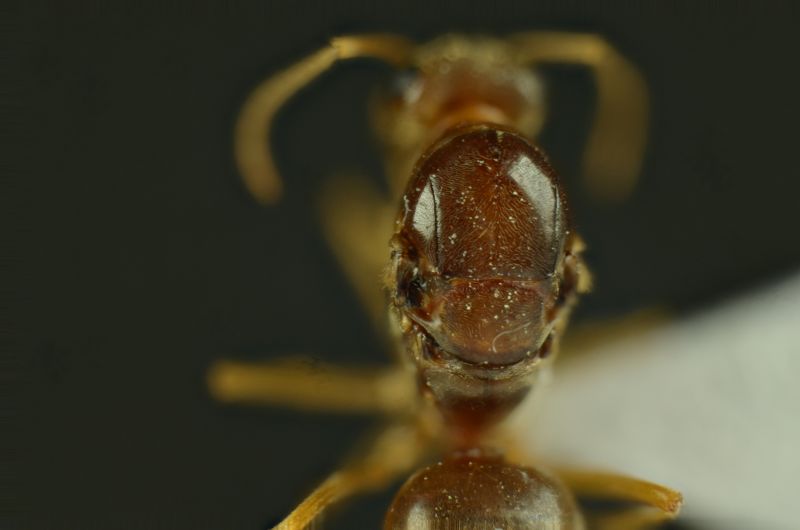
(figure 3b)
4
- Fine punctures of parapsis conspicuously coarser than those of disc of mesoscutum (Fig. 17); first tergum with fewer than 6 erect hairs on disc, often none; interocellar distance about equal to ocellocular distance . . . . . Myrmecocystus pyramicus
- Fine punctures of parapsis not obviously coarser than those of disc of mesoscutum (Fig. 18); first tergum with at least 12 erect to suberect hairs on disc; interocellar distance less than ocellocular distance . . . . . Myrmecocystus ewarti
When viewing figure 3b, the fine punctures of parapsis are not obviously coarser than those of the disc of the mesoscutum. When using figure 4, it is clear there is more than six erect to suberect hairs on the first tergite, thought the picture makes it a little difficult to see that there is at least 12. The interocellar distance is shown in figure 4b to be less than that of the ocellocular distance. This and locality confirms this being M. ewarti and negates M. pyramicus.

(figure 4a)
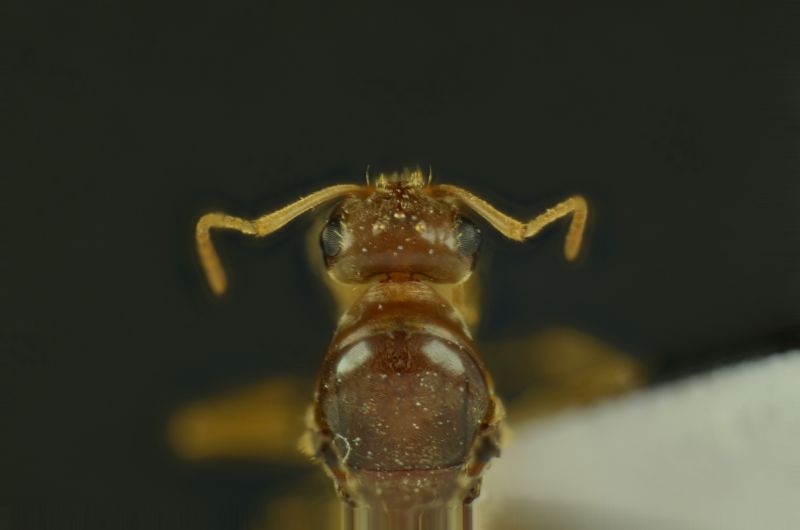
(figure 4b)
Edited by ReignofRage, May 24 2022 - 5:58 PM.













